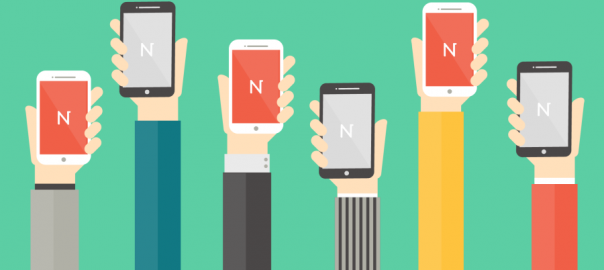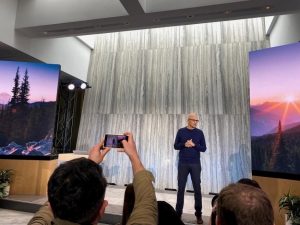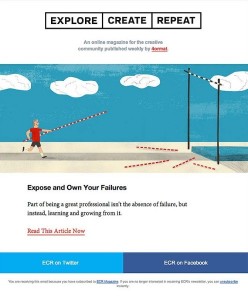Picture this: you’re a sales representative at a small telecom store in your local mall. We’ll call you Trish. You work 4 shifts a week at Acme Mobile, which is an up and coming brand in the telecommunications industry. Acme Mobile has retail stores throughout the country, with hundreds of frontline employees. You started working at Acme Mobile a few months ago in order to save up money for rent and tuition. You enjoy your job and the perks of saving on phone plans, but your interest does not extend much further than that. So, do you live and breathe the Acme Mobile brand? Do you know about all of the new promotions, products, and long-term company goals? Probably not (but, you probably should).

Does this employee sound familiar to you? If you work in retail, telecommunications, hospitality, manufacturing, or food services, then a large proportion of your workforce will made up of frontline- or non-desk employees. They are the backbone of your company and act as the face of your brand on a daily basis, so they are critical to engage, but often the hardest to reach.
The problem lies in the fact that frontline employees are busy, often work part-time, are geographically dispersed, and do not have access to traditional corporate communication channels. Basically, they are hard to reach in every possible way. Even if you do communicate with them, how can you ensure that that information has been received and understood? Because of this, there is a growing frustration around communication between frontline employees and corporate. Tribe Inc. recently conducted a survey of 1,000 non-desk workers in the U.S, where 84% of respondents said they don’t get enough information from top management. Furthermore, 75% said their employers aren’t telling them enough about changes in policies and goals. The top insight? Frontline employees are craving more information from corporate, but corporate doesn’t know how to get it to them.
So, how can we solve this problem? First, we need to take the following into account:
1. They do not have corporate email addresses
Only a small fraction of frontline employees have access to a company email address. Tribe’s survey found that 83% of frontline employees are not on their company’s email system, although 38% say they would like to be. Email is a good channel for internal communications; however, when dealing with frontline employees, high turnover, security, limited access, and expenses can become issues.
2. They do not have the time
A study conducted in the retail industry showed that frontline employees are extremely time constrained during their workday. In fact, the total time spent by a retail employee on corporate communications averaged at less than 2 minutes per day. Their time is short, so communication has to be quick, accessible, easy to understand, and actionable.
3. They aren’t getting the right information
Broken telephone (no, not the game) is a real problem- and it’s happening between supervisors and staff everywhere. Tribe’s survey found that 73% of frontline employees rely on their immediate supervisors to keep them informed. This situation is interesting, because we have both corporate and frontline employees relying on supervisors to receive, understand, and pass on the message properly. Depending solely on supervisors to communicate is dangerous, as it can result in issues with inconsistency and timing.
Ultimately, companies need a way to reach frontline employees that is accessible, efficient, and accurate. The answer? An enterprise mobile app. And we’ll tell you why.
A mobile app is the perfect answer for communicating with your frontline employees because it solves the problems outlined above. First of all, you do not need a corporate email address to access an enterprise app. Secondly, the combination of an app and push notifications makes for the most time-effective communications solution. Instead of having to check in on the company intranet, newsletter, social media pages, or email, a mobile app will check in on you. Push notifications prompt employees when there is new information for them, meaning they can access it when convenient and will not have to worry about missing anything important. Finally, corporations can use an enterprise app to reach every employee- down to the cashier at one of your retail locations. This means that everyone can be communicated to at the same time and with the same level of accuracy.
Accessible? Efficient? Accurate? Check.
Over 85% of people between the age of 18 and 35 own a smartphone and are spending an average of 162 minutes per day using them. With Gen Y being the largest generation in today’s workforce, and with incoming Gen Z employees, it is more important than ever to activate a mobile first communications strategy. At the end of the day, your employees will be using their smartphones no matter what, so you might as well take advantage of it. Using a mobile app to connect with your frontline employees will help all parties involved, by making information more accessible and by providing a channel for two-way communications.
(188)











